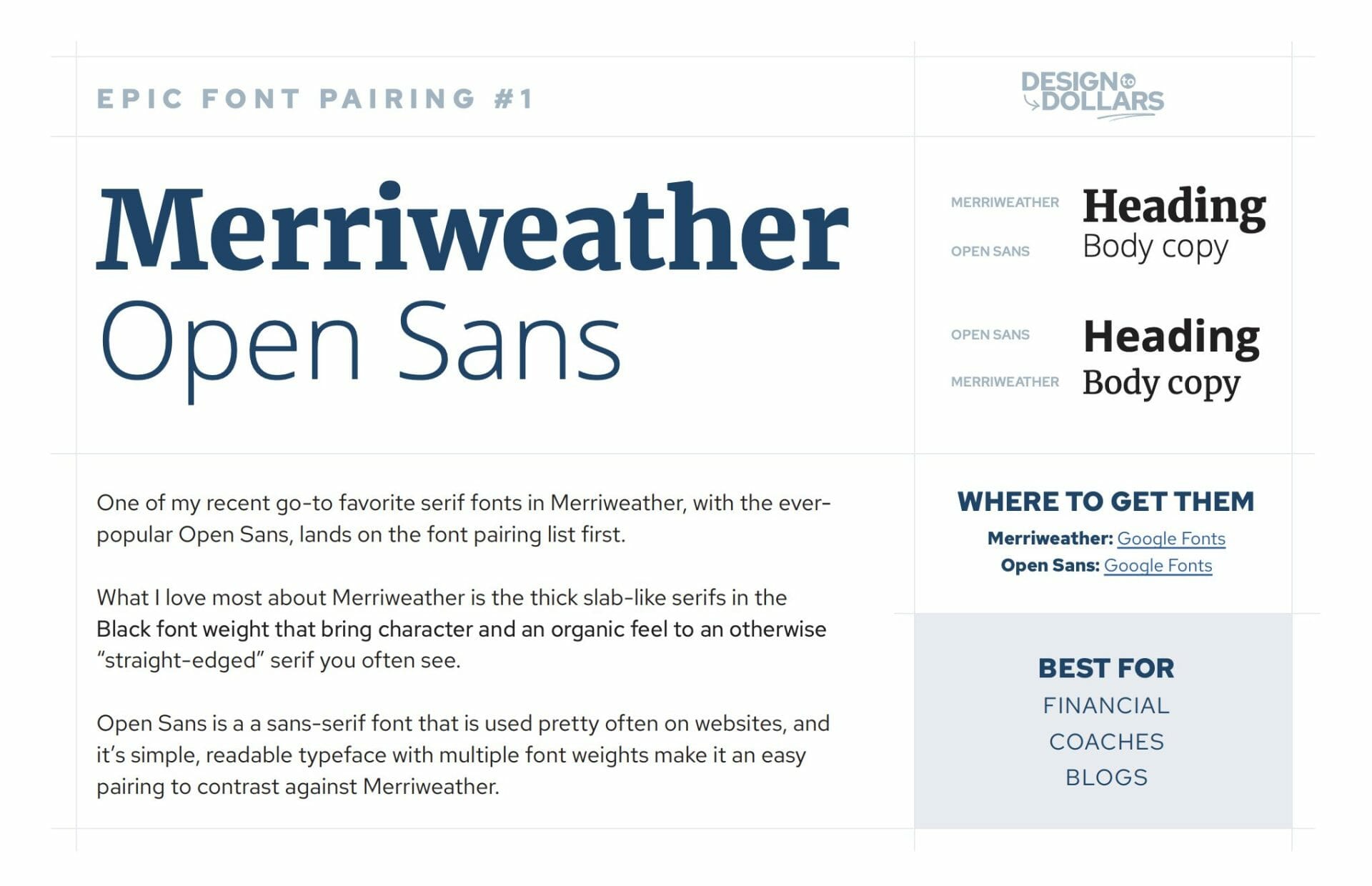As I’ve written about in previous posts, you cannot expect to publish a new website and let it go stale.
This is truly a recipe for disaster, and can lead to hurting your overall business’ credibility.
These are not major things, either — the smallest of details can really affect the way a potential customer can perceive or trust you. And this can really dictate whether they become a customer or not.
Many times, there are little details that fall through the cracks, and that’s why I’m here to bring those little details to light so you can do a thorough check of your website to ensure you’re not hurting your own credibility.
5 Epic Font Pairings You Can’t Go Wrong With
Tired of searching for fonts? With my 10+ years of design experience, I’ve put together the best font pairings for you to use, where to find them, and what industry they’re best for.
Get the Free Guide
Copyright Year
It may sound really silly, but that copyright year in the very bottom of your site, buried in small type, can hurt you. It’s a very easy detail to miss and forget about, but having an outdated copyright year can cause website visitors to wonder if you’re still doing business.
Worse case? You are 3, 4, or even 5 years out of date from when you last updated it.
Can you imagine visiting a site that said “© 2018” in the footer?
Tip for prevention: Set yourself a reminder the first week of January every year, to update your website copyright year. If you use a task management software, just setup a recurring task, so when you cross it off, it will come back next year (that’s what I do!).
Broken Social Feeds
A lot of clients request to have embedded social feeds on their website. I agree that it is a very easy way to add revolving, fresh content to your site with zero effort (well, other than posting on social).
However, these social feeds can break constantly. They need to be reconnected, reauthorized, and updated so it stays current with your account. Facebook and Instagram are constantly changing how these work.
As a result, that great revolving content you thought was going to be nice to have, is now just an eye-sore on your homepage because it’s not working. And having something broken on your site easily leads to mistrust and loss of credibility.
Tip for prevention: Just don’t use them — as I said, they break too often. Or, be very diligent at checking that they’re working at least once a month.
Old Content
Did you start posting some blogs on a whim, because you had a “kick” for trying to help your site’s SEO and content strategy? But only made it 6 blogs in and quit?
Fast forward 2 years later, and now you’ve got a Blog page with no new posts on it for two years.
I don’t know about you, but I personally look for the most relevant information I can get — and more than likely, if something is 2 years old, there’s far more updated content I can get elsewhere.
On the contrary, if you’re consistently posting on your blog, there can be a huge boost of credibility in showing you’re relevant and active.
Tip: If you’re going to post new content, stick with it. Even if it’s only once a month — just create a schedule and be consistent.
“Coming Soon” Pages
One of the most off-putting things for me when I frequent a business’ site is when they say “Coming Soon!” for a new page/service/product and it’s been 6+ months since you first saw that message.
If you don’t intend to launch whatever it is that’s “Coming Soon” — just don’t advertise for it.
You can only string customers along for so long before they’re going to become impatient and disinterested and end up going elsewhere to get what they want sooner.
Never-ending “Coming Soon” pages are a big turn-off in credibility and loyalty.
Tip: Only use “Coming Soon” if you knowingly have a launch date within 3 months or less, and can stick by it.
Broken Links
Ahh, there’s nothing more wonderful than browsing a site and landing on a 404 page. Not!
Having broken links on your website can be an immediate deterrent for a website visitor, and a loss of credibility right away.
I know that 404 links happen, stuff changes on websites constantly, but there are right ways to go about it to ensure that your visitor is not put off by it.
You should treat your 404 page just like any page — make it branded and something enjoyable to look at. Nobody likes a 404 page, but put some useful links or fun messaging to help ease the abruptness.
Tip: Do an audit of your website every 3 months to check for broken links. If you use WordPress, you can use a plugin like Broken Link Checker.
Think long term
So, the name of the game with this post is to really think long term. When working on your website, don’t post content that is going to be outdated in 6 months, and you have no intentions of revisiting.
It’s best to have more evergreen content that can live on your website and still be relevant in 1-2 years.
But at the end of the day, I recommend creating yourself a schedule of website audits throughout the year to ensure your website isn’t going stale and losing credibility.
We need our websites gaining new customers for us, not losing them.




